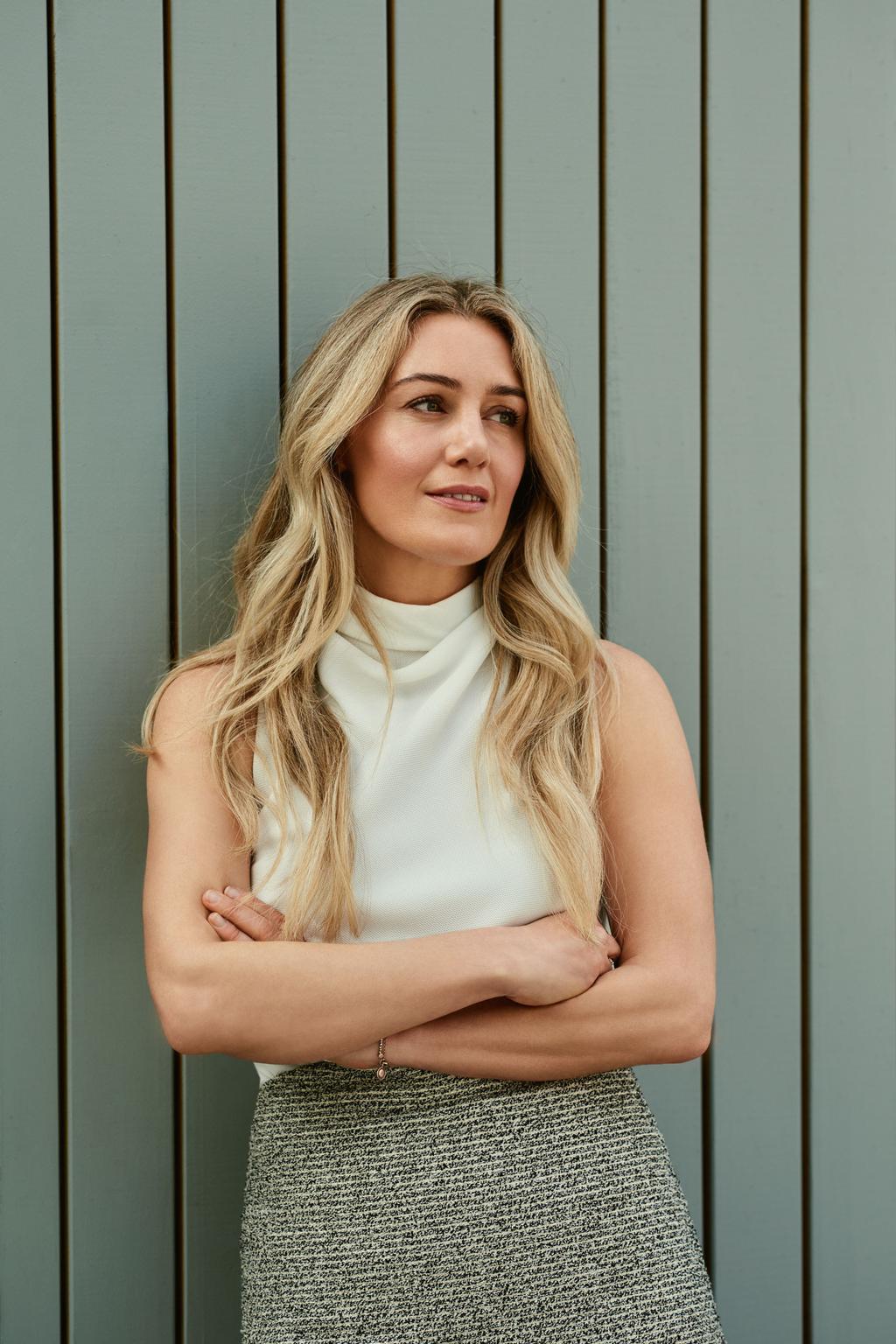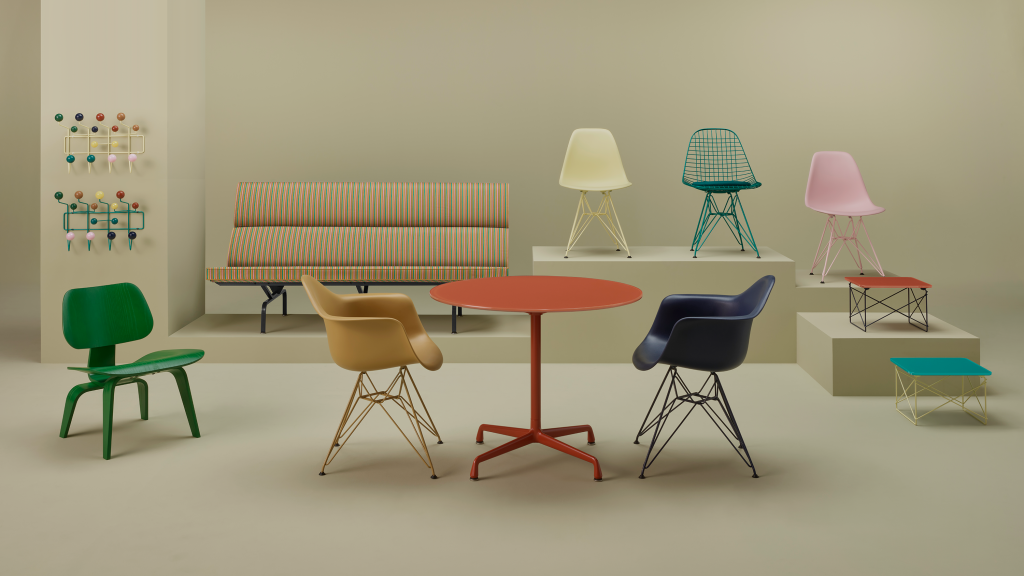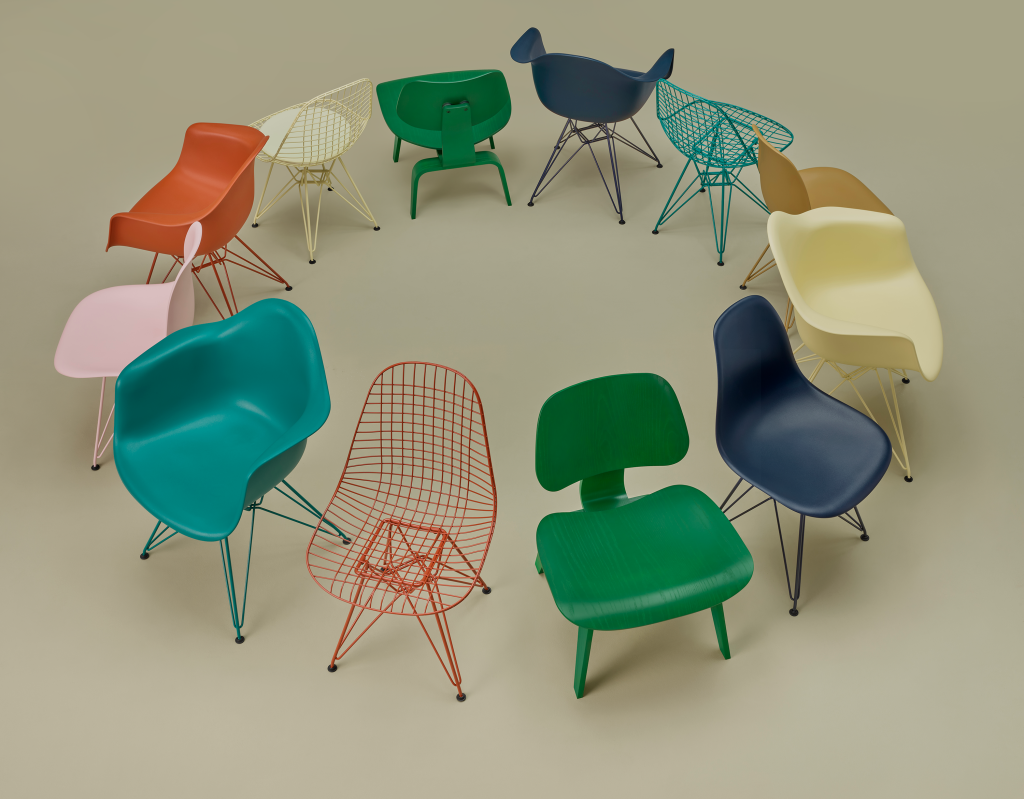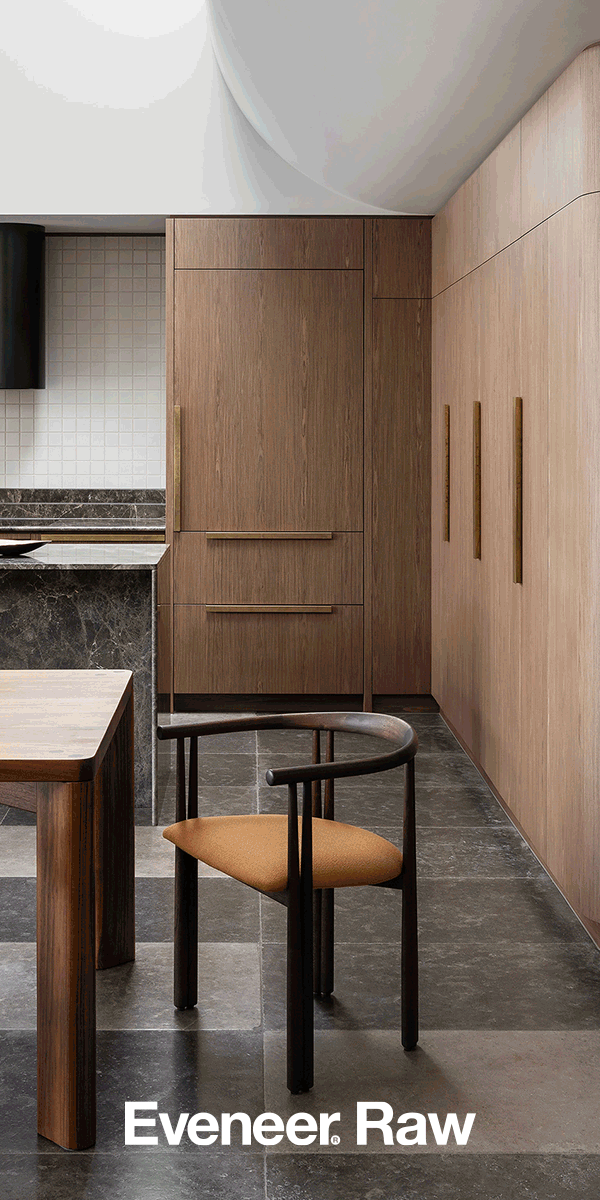With its panoramic views of the Birrarung, Yarra Bend Park and the Melbourne cityscape, Kew’s Fenwick residence complex burgeons from the...
Designers at Play
The Herman Miller x HAY collection, in conversation with Caroline Choker, co-founder of Sydney design studio, Acme.
Essay
Hayley Curnow
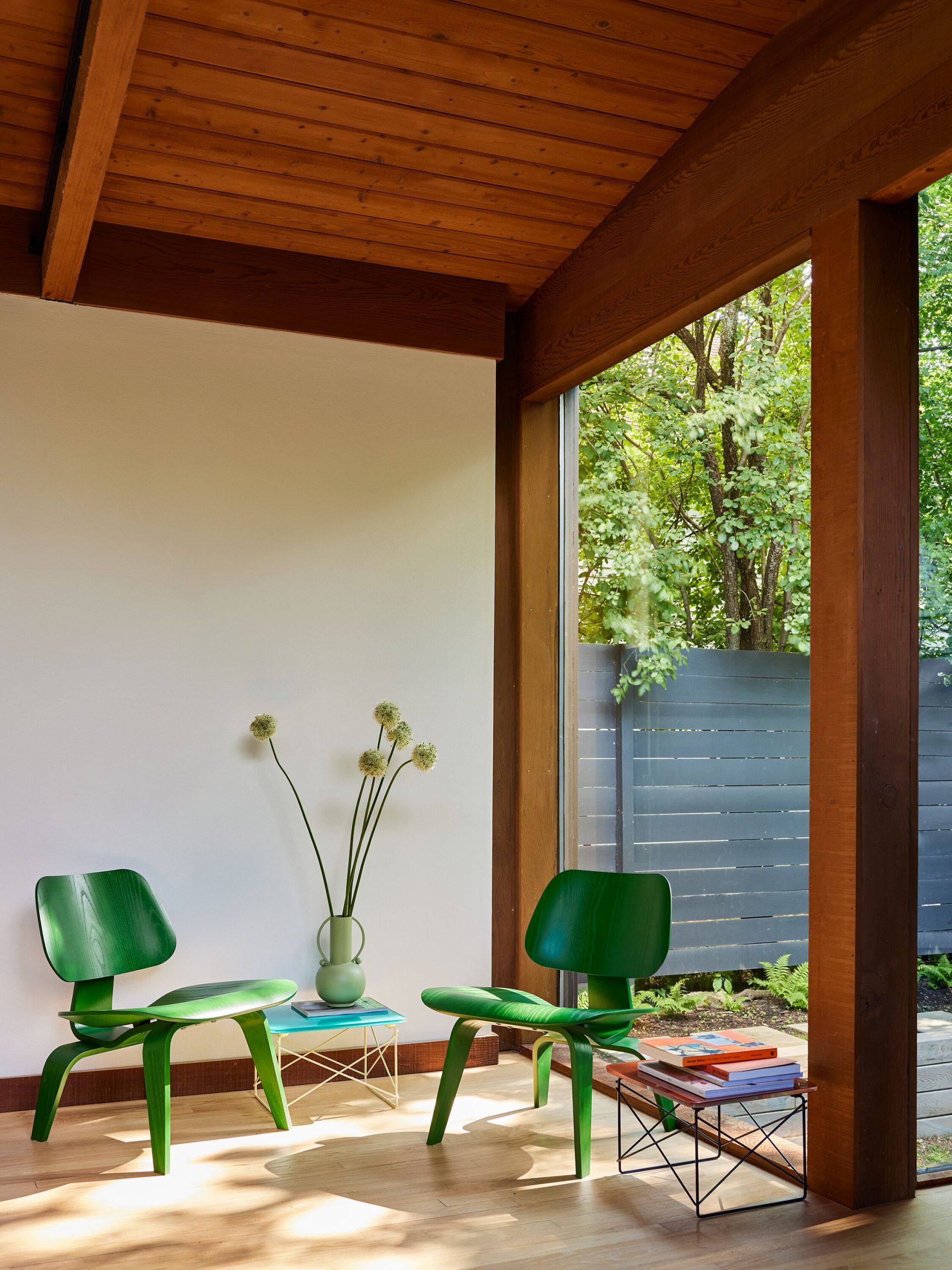
Herman Miller X Hay
Creative collaborations have the capacity to synthesise their participants’ thinking, driving inventive outcomes that could not be produced by either party in isolation. Yet the value of collaboration is not limited to innovation. It also has the power to reframe our most enduring design beliefs through a new lens, reaffirming — and often, reinvigorating — the guiding lights of our creative endeavours.
Herman Miller’s recent collaboration with Danish design house HAY brings these possibilities into expression, presenting a fresh take on eight iconic furniture pieces originally designed by modern design greats, Charles and Ray Eames. “When I was growing up, we had an Eames lounge chair that I would recline into while my dad was at work,” reveals Caroline Choker, co-founder of Sydney design studio, Acme. “It wasn’t until university that I discovered industrial designers, Charles and Ray Eames, were influential pioneers of modernism and some of the greatest designers of the 20th century,” she recalls.
Having visited a 1997 Vitra exhibition, which predated the launch of the HAY brand, co-founder Rolf Hay was struck by the Eameses approach to mass production. While mid-century Danish designers, such as Børge Mogenson, Arne Jacobsen, Finn Juhl and Hans Wegner were translating timber craftsmanship to a new era of factory manufacture, “the Eameses were driven by creating design for the many, not for the few,” observes Rolf. This pursuit did not dampen the Eameses creative spirit. Rather, it liberated them to experiment with the possibilities and limitations of materials such as plywood and fibreglass in new and evolving ways. This adventurous attitude has been a source of great inspiration to HAY, who are known for making good design accessible to the largest possible audience.
Initially daunted by the task of reimagining the Eameses historically significant furniture pieces, HAY co-founders Rolf and Mette Hay intuitively began with colour. The duo revisited an archival colourway of ‘Jacob’s Coat,’ a much-loved Alexander Girard textile designed in 1959, which sparked synergies with the vibrant tones of the iconic Eames shell chairs. In refining the collection’s seven hues, HAY was determined for each item to stand on its own, yet “look beautiful together, no matter how you combine the colours,” explains Mette.
The collection’s expanded colour palette is executed in new materials selected by HAY, each combining a deep respect for the Eames’ experimental approach with contemporary technology and environmental consciousness. The Eames Wire Base Low Table & Universal Base Round Table are reimagined with colourful, cast-glass tops, offering spirited plays of light, shadow and tactility, while the table bases and Eames Wire Chair are finished in vibrant matte powder coats. Graded for outdoor use, the glass and powder coat finishes allow for continuity between indoor and outdoor applications, while delivering a durable end product that can withstand the knocks of daily life.
The Eames’ celebrated Moulded Plywood Chair is re-finished in a verdant green stain, contemporising the chair’s classic silhouette. Fabric supplier, Maharam, faithfully reproduced the historic ‘Jacob’s Coat’ fabric for the reimagined Eames Sofa Compact, offering a tender reference to Rolf and Mette Hay’s design process. Combining the seven hues of the new collection, the Eames Hang-It- All demonstrates the synchronicity of HAY’s colour palette. The piece’s original painted timber spheres are replaced with cast-glass orbs, further renewing the spirit of the ‘wire and ball’ icon. “As one of the longest-standing examples of timeless design, it seems only natural that a contemporary perspective of the Eames DNA would be celebrated through HAY’s colour palette and material ingenuity,” reflects Caroline.
With consideration of how Charles and Ray Eames might design products today, HAY turned their attention to the use of sustainable materials. The Moulded Plastic Side Chair and Armchair are now made from 100% post-industrial recycled plastic, addressing Herman Miller’s overarching imperative to reduce the environmental impact of its products. Given the current global challenges we face with climate change, material scarcity and resource depletion, Caroline believes that “audiences encourage renewal and collaboration,” with a growing expectation of sustainably minded design pieces that will stand the test of time.
The collaboration between Herman Miller and HAY sparks strong philosophical alignments between the Eameses and Hays, while strengthening the identity of each. Both partnerships share a great joy of colour and its capacity to drive design expression. And both harness an entrepreneurial spirit and a unified design voice as a married couple. The collection gives a voice to these parallels, celebrating the intersections between modern and contemporary design thinking.
Caroline suggests that collaboration, at its best, “enables designers to expand their vision, experiment with different forms and rethink boundaries.” Yet, a creative dialogue based on mutual trust and respect is paramount. Considering the collaborative nature of her own studio, Acme, Caroline says that “working together and with external disciplines creates a seamless, holistic approach to develop our designs, harness their strengths or troubleshoot any limitations we encounter.” This creative process of refinement and problem-solving requires an unbridled sharing of ideas and perspectives, which Caroline believes “takes creative platforms to a whole new level.”
The Herman Miller x HAY collection is testament to this. The first-of-its-kind collaboration reflects Herman Miller’s legacy of creative partnerships, while expressing the creative intersections of Eames and HAY as creative powerhouses of their time. The reimagined collection of Eames classics bolsters the creative identities of its participants – a projection of shared values, reinterpreted for a new generation of design enthusiasts.
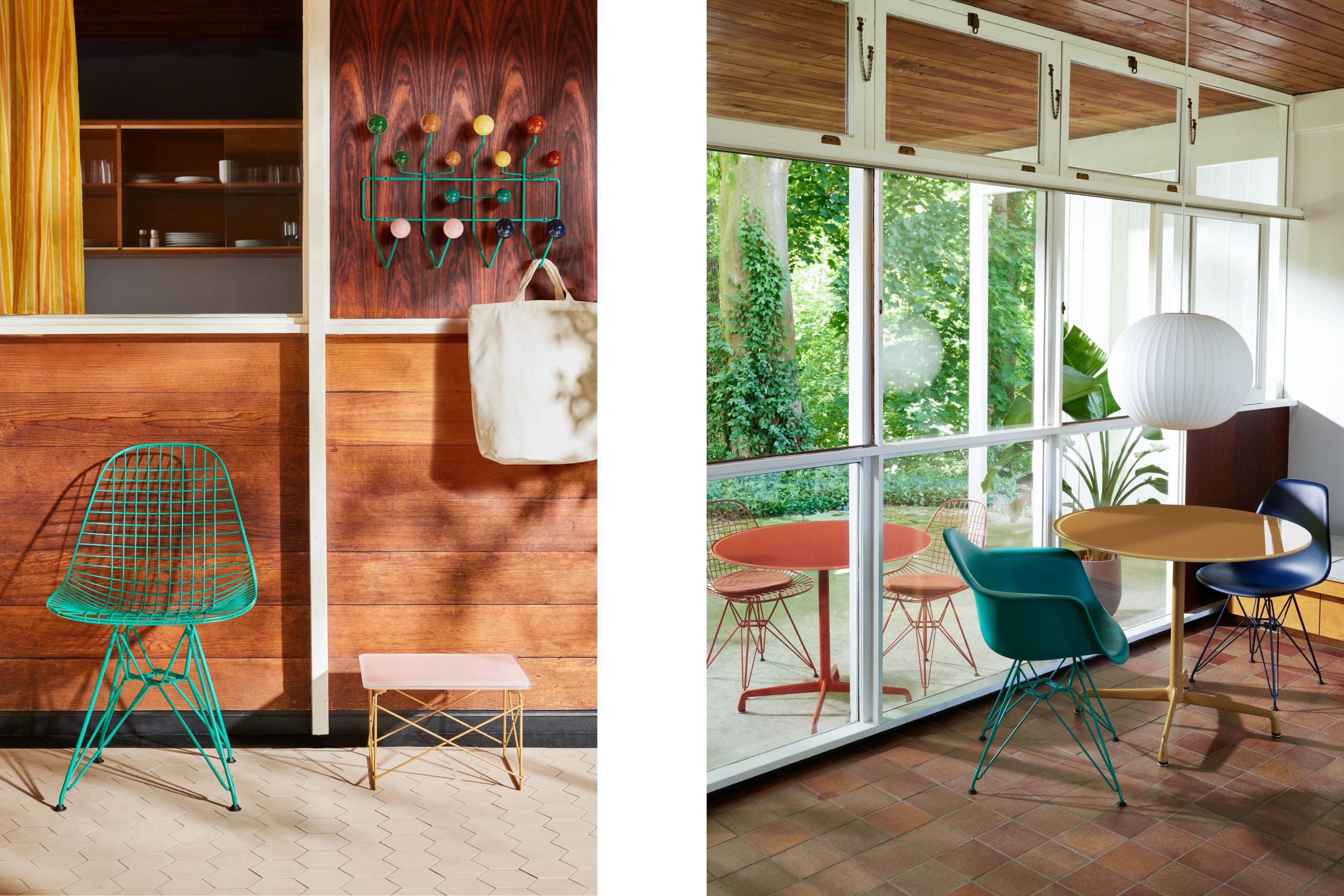
Herman Miller X Hay
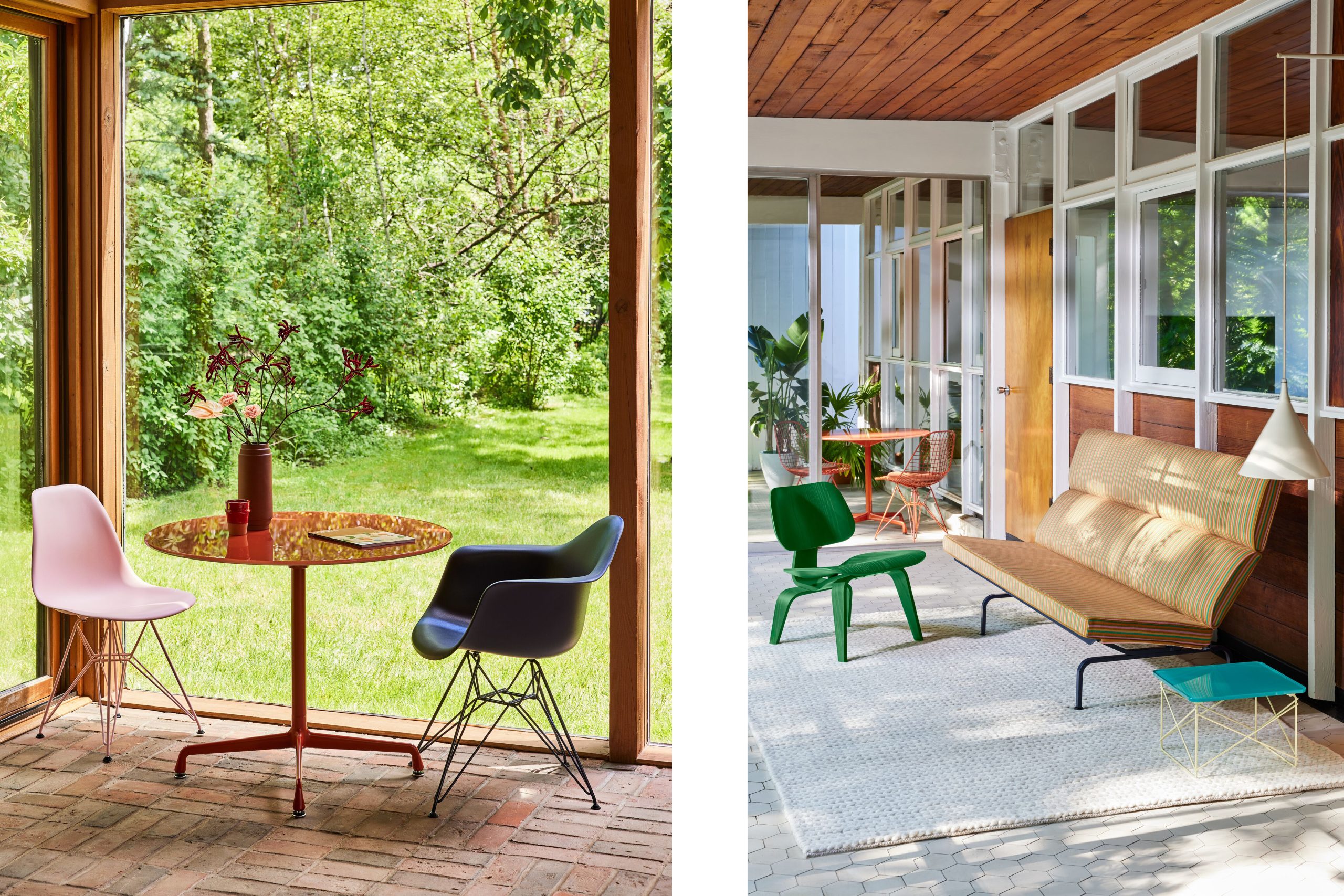
Herman Miller X Hay
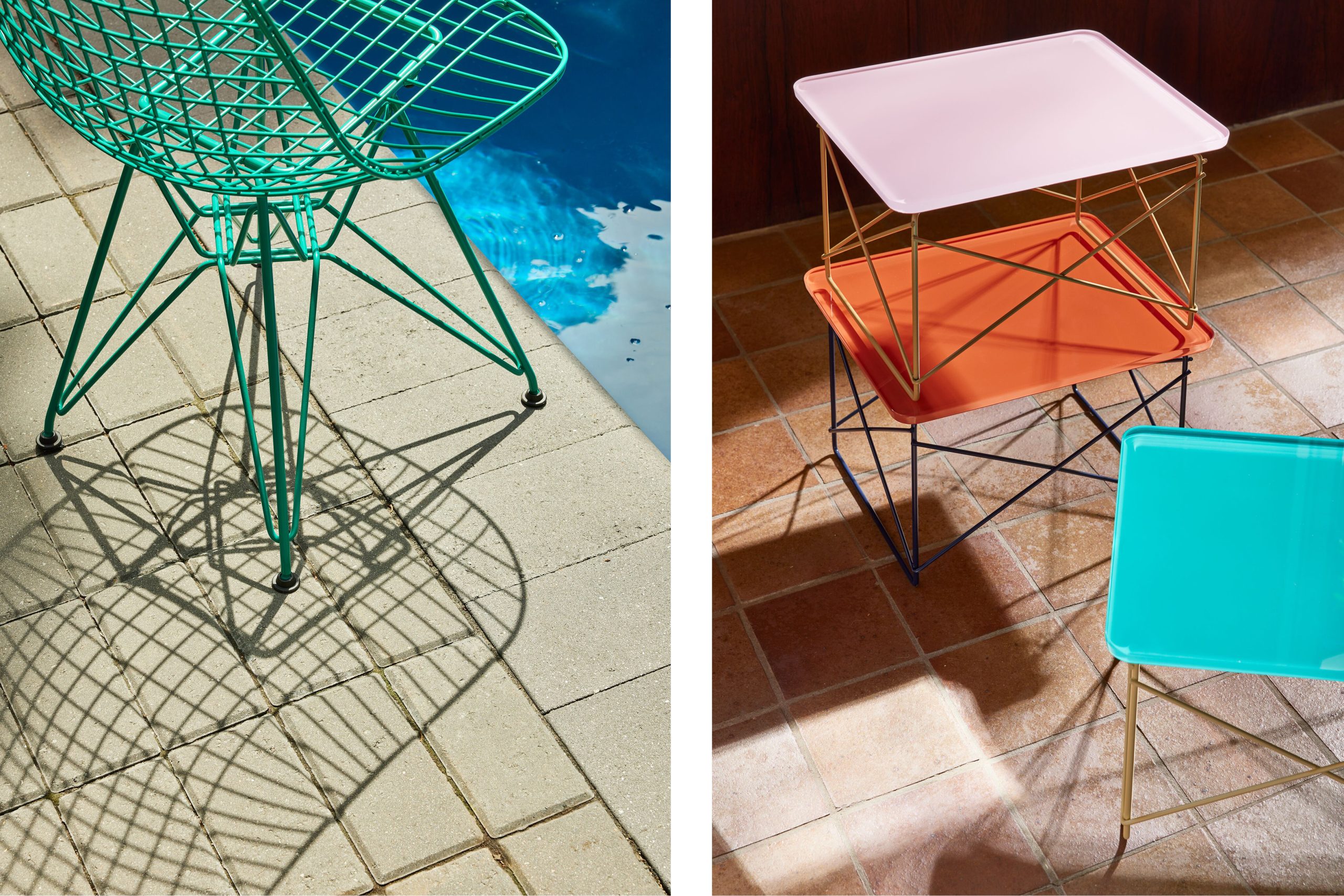
Herman Miller X Hay
